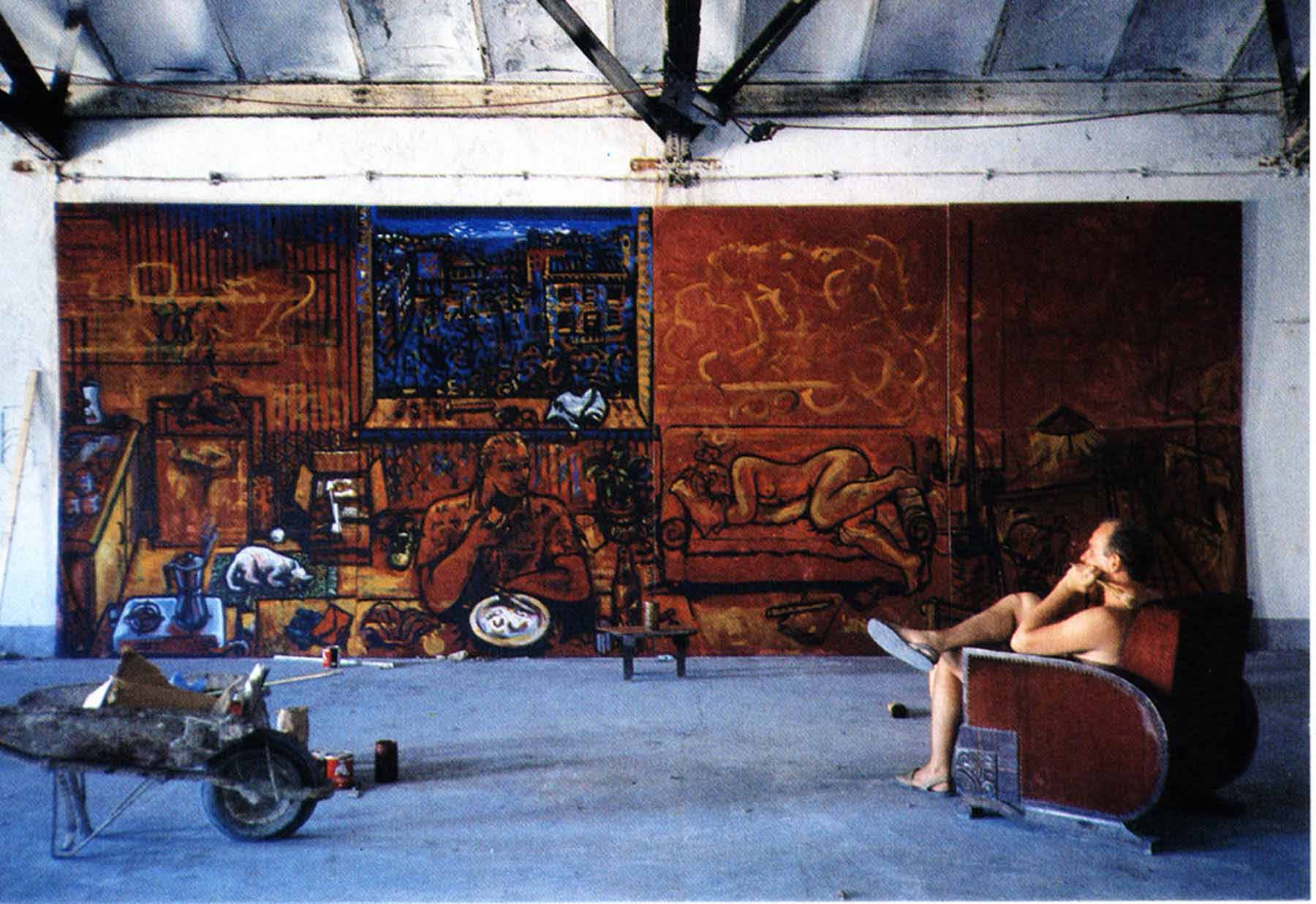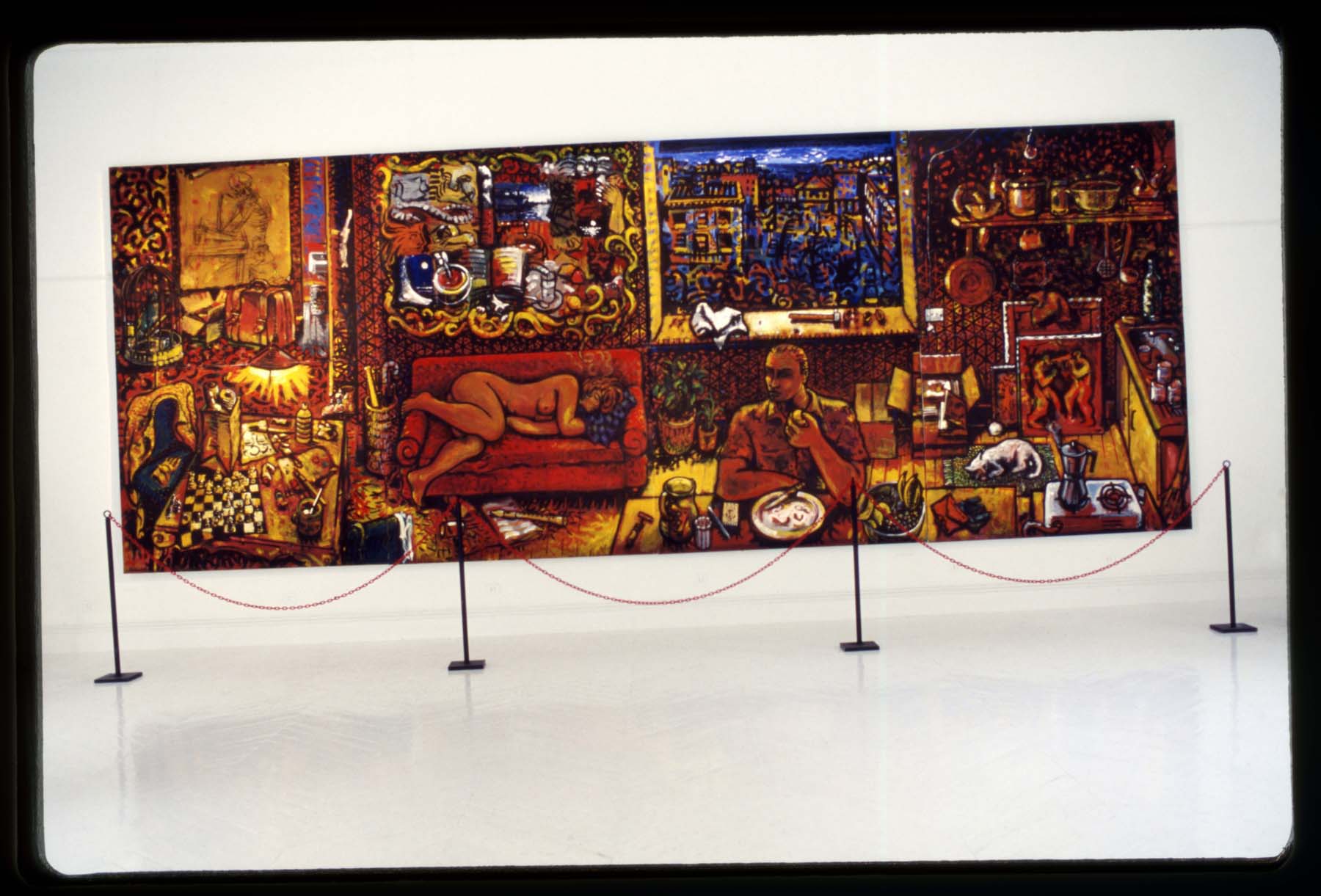
Una pintura completa
Sebastian Xano Armenter
22/10/86. (Sala 081)
PAINTING IN VERSE
When Xano Armenter was doing his military service in the Canary Islands, where he is from, he met a soldier who pretended to be crazy. In the military hospital, he was assigned to paint the flowerpots of the great staircase, and the soldier took advantage of this to give forcefulness to his symptoms and paint, with the same yellow and red paint that had been assigned to him, the leaves and branches of the rose bushes and geraniums, the complicated architecture of a dragon and the moth-eaten skin of a dog eternally attached to the trunk of the tree.
Xano Armenter saw a certain tragic grandeur in his friend’s false madness, perhaps because he already shared with him this epic vision of painting and the conviction that the really wrong painting is the one that wants to make believe that what is painting is roses. Like an epic tale, the eight paintings of A COMPLETE PAINTING have rhyme: they maintain a link, an order that makes them independent and coherent at the same time, and they propose the fiction of a reality made of paintings. Xano Armenter paints in verse and explains the theme as a classic, with the motifs of things at the bottom and that of ideas at the top.
Everything together invites to an orderly reading of the eight verses, of the eight paintings. The four at the base have a journey through the personal interior, with the cat resting, the coffee pot on the stove, the letter, through the self, with the man who eats with his gaze beyond the painting, through sleepy love, associated with a playful and erotic world of the flute; through the world of work, explained from a chessboard and a low light in the late hours.
The four at the top explain a more theoretical world, centered by the nocturnal ideal of the window and the girl’s dream. On the left there is the mute presence of matter, with the copper and iron, and on the right that of history itself, with the travels, the suitcase, the boxes of the provisional transfer. It is now necessary to observe, to read the objects present in each verse, which give the tone and the intention of each scene, always conceived with the irony of those who know they are painting and working in a game of fictions, more amusing than instructive.
David Cirici.
